
Since launching the business in 2013, we’ve pretty much seen it all on LinkedIn. The good, the bad and the ugly. With our 8th year anniversary, we thought why not turn back the clock and look at all the lessons we’ve learned along the way to truly understand what fuels success on LinkedIn.
After hours and hours going through hundreds of different strategies, best practises and systems to follow we’ve landed on these 8 commandments. Following these to a tee will help you better connect with your target market, open up more conversations and ultimately land you more business on LinkedIn. 😊
One of the most important foundations to get right on LinkedIn is the quality of your network. Don’t get caught up in the myth that it’s all about playing the numbers game. Often people are too eager or impatient to start growing their network so they connect with everyone and anyone believing that this will generate them great connections and strong relationships. This couldn’t be further from the truth.
To be successful on the platform you need to make an effort to understand your audience, personalize the way you communicate with them to avoid coming across as a spammer and engage with their content to develop rapport before you even send out an invite to connect. If someone recognizes your name from either your reaction or comment on their post, they’re much more likely to have a conversation with you now that you’ve shown them you’re interested and engaged in what they’re sharing on LinkedIn. 🙌
People want to feel like you’re connecting with them to build a two-way relationship that is valuable, authentic, and trustworthy. If it’s obvious that they’re just another number to you, it will be a while before you get a response. So remember, always choose quality over quantity.
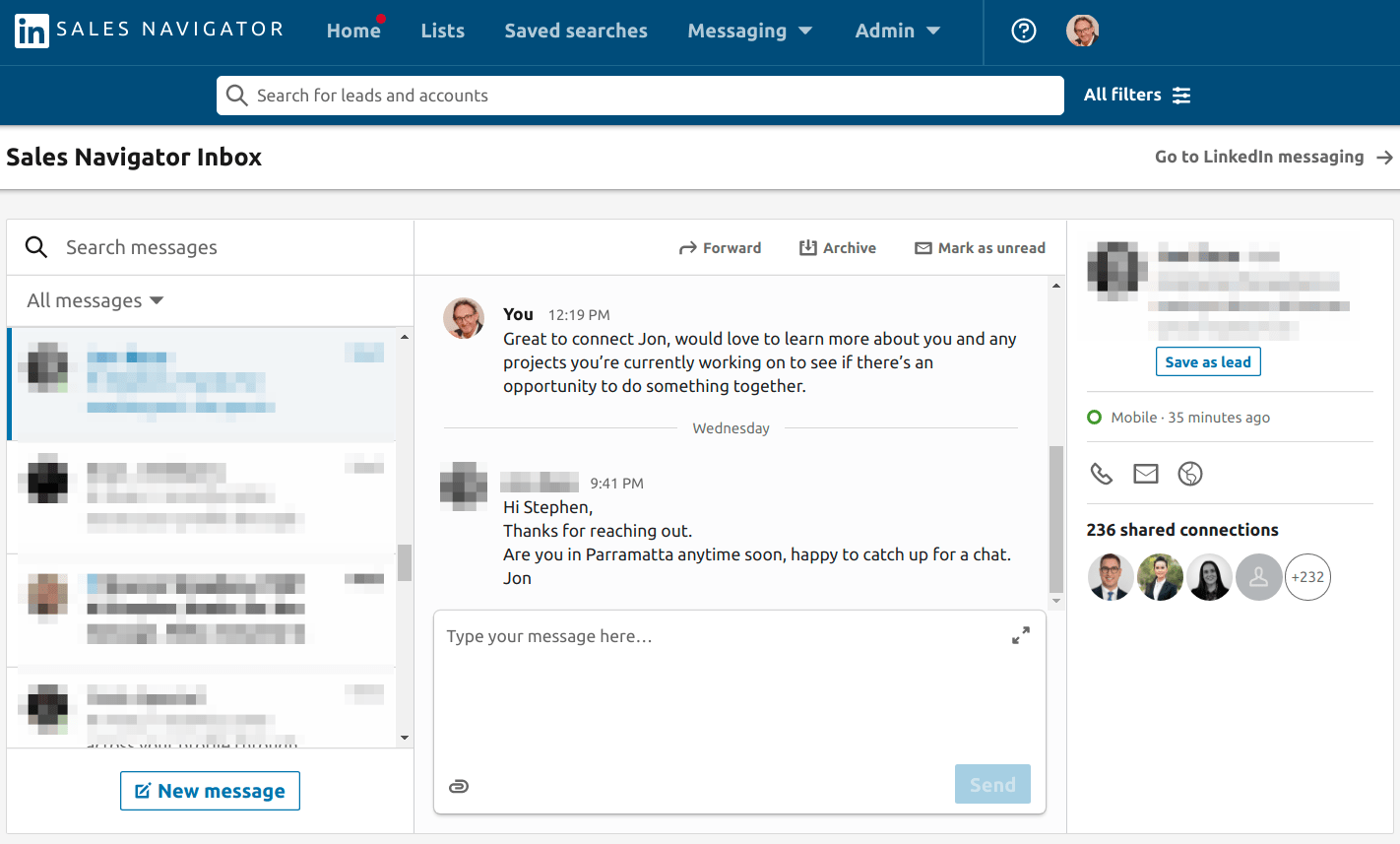
If you were at a networking function would you just walk up to someone, hand them your business card, and start pitching them what you do? That’d be pretty embarrassing. 😳 Well, it’s really no different to sending out truckloads of invitations and messages on LinkedIn to random people selling your product or service.
Although more and more people have made the transition to working online, it’s important to remember that behind every computer is an actual human being. Push past the screen and think about how you’d interact with that exact same person if you were talking to them face to face. You might feel small in the digital world, but how you treat people speaks volumes.
If you start pitching every single person you come across on LinkedIn, it won’t take very long for the word to spread and your reputation to be tarnished. At that point, no one is going to want to do business with you. 😟
When people realize they’re not getting any business they automatically blame it on the platform because they don’t know where else to turn. But the sooner you realize that LinkedIn is a relationship-building platform, the sooner you’ll start seeing greater results.
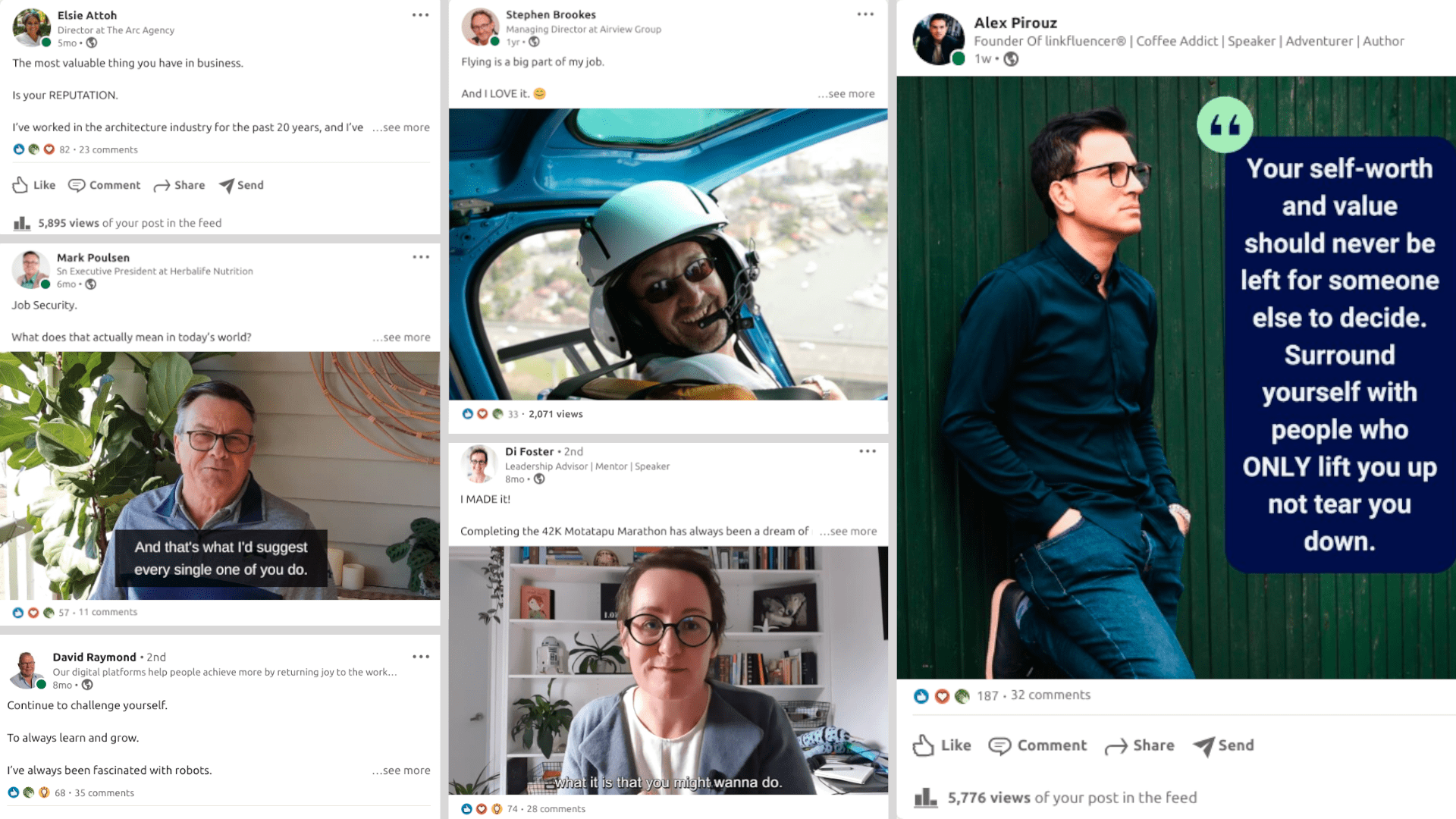
After posting up over 1,000 pieces of content, you could say we know a thing or two about the impact and power of it when done right. 😎 When we strip everything back, probably the most helpful thing we’ve discovered is that there’s actually a process to doing it successfully.
A lot of people find flushing out content ideas quite daunting because they jump in blind without a strategy. But if you follow the process below step by step you’ll be posting content with ease in next to no time. 👊
The first thing you need to do is block out a half-day or full-day session in your diary, depending on how many posts you want to be putting up per week. Then, choose your workspace wisely. This has to be an inspiring place and could be your office, your home, or even a park you love.
Once you’ve got your environment sorted it’s time to tackle the hardest part, actually flushing out the content. Instead of attempting to think of topics off the bat, consider your personal brand and the topic you want to be known for. Then start thinking about subcategories of that topic.
For us, our main topic is LinkedIn and our subcategories are things like lead generation, content, strategy, personal branding, partnerships, etc. Once you’ve got your categories, start flushing out educational and personal story ideas.
With educational content, your key focus should be on stories around your main area of expertise, whilst getting your audience to buy into you on a more emotional level through personal posts. These could be about funny client experiences you’ve had in the past or a trip you took that helped you realize the importance of having a healthy work-life balance for example.
Then once you’ve flushed out all of your content, allocate some as text, some as images, and some as videos to mix it up a bit. 😊 To keep yourself accountable, note down in your diary the days you’ll be posting or get your assistant to do this for you.
When most people see the potential of LinkedIn they get super excited to start, rushing to implement their campaign with no strategy or system in place. Then a few weeks later, they’re complaining that they’re not seeing the results they hoped for. 😬
That’s why it’s important to follow a two-phase approach whenever you launch any campaign on LinkedIn. The first phase is to get all your resources prepared and ready before you even start. This includes setting up your profile, getting clear on your audience, creating your saved search, writing up your messaging scripts, and flushing out content if needed.
Then you create a schedule around your campaign and either map it out in your calendar or hire someone else to manage it for you if you don’t have the time to implement it yourself. In your plan, you need to flush out how many invites you’re sending out per day, when you’re sending your private follow-up message, when you’re posting up content, etc. It’s also a good idea to block out time to engage with your lead shares and get back to outstanding messages.
People think they don’t need a schedule and that it’ll get done, but this fails almost every time because life just gets in the way. So to give your campaign the best chance at success put this two-step process in place. 😊
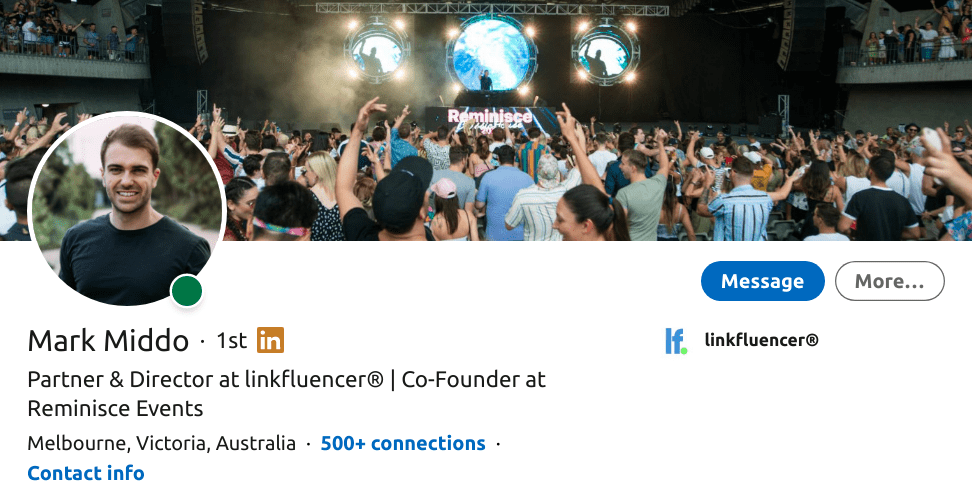
Over the years we’ve come across thousands of profiles on LinkedIn, most of which have been inconsistent in the way they present who they are, what they do, and the value they bring to their industry. You really only have one chance to make a good first impression, and if you get it wrong it’s likely to be your last. 😞
Your branding and positioning have an enormous impact on how well you convert profile views into conversations within your campaign, that’s why all your communication must be aligned to your overall personal brand. How do you do that? 🤔
Well the first thing to do is an audit. Get clear on what you stand for, how you want to be perceived, what type of content you want to put out there, your area of expertise, etc. Then from there, make sure that anything you share online, whether it’s the copy on your profile, the posts you publish, or even an image you choose, is aligned to that brand you’re trying to build.
Every few months cross-check all your communication across your overall online footprint. The worst thing that can happen to your personal brand online is a disconnect between how you’re positioned or presented on social compared to the rest of your online footprint. One small inconsistency can leave your audience feeling skeptical and hesitant to trust you.
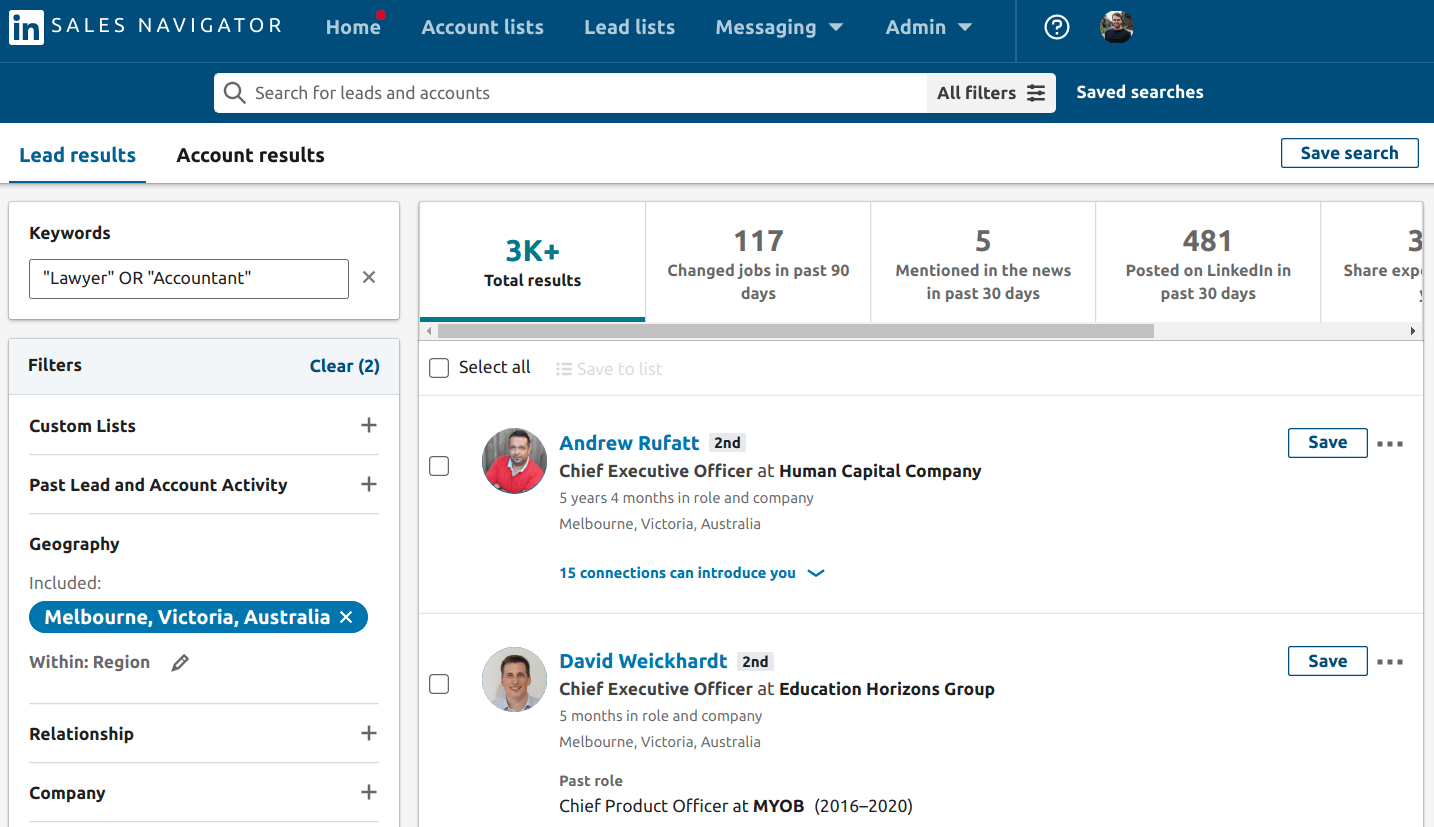
If you don’t niche you don’t exist! This is probably one of our favorite phrases because it’s so true. Every industry right now is overcrowded, so the only way you can truly stand out is to get your communication and messaging so targeted that you cut through the noise.
Even though there are over 700M members on LinkedIn, if you’re targeting lawyers and accountants in Melbourne for example, you’ll probably get around 5-6K within that search. To niche this down even further, you are better off picking one of those industries and target them individually.
That way you can write a script and publish content that is more directed to that audience. This is the strategy we’ve used across all of our client campaigns over the years and it works a treat. To niche down ask yourself questions like:
1) What’s the path of least resistance to getting a sale?
2) Who’s most likely to buy from you?
3) Who needs your product or service the most?
4) What type of clients do you enjoy working with the most?
5) Which customers spend the most and stay with you the longest?
Sometimes the best way to answer these questions is by looking at your top 50 clients as this will most often tell you who you should be going after. If you don’t have this data, then it’s a matter of guesstimating the results based on experience.
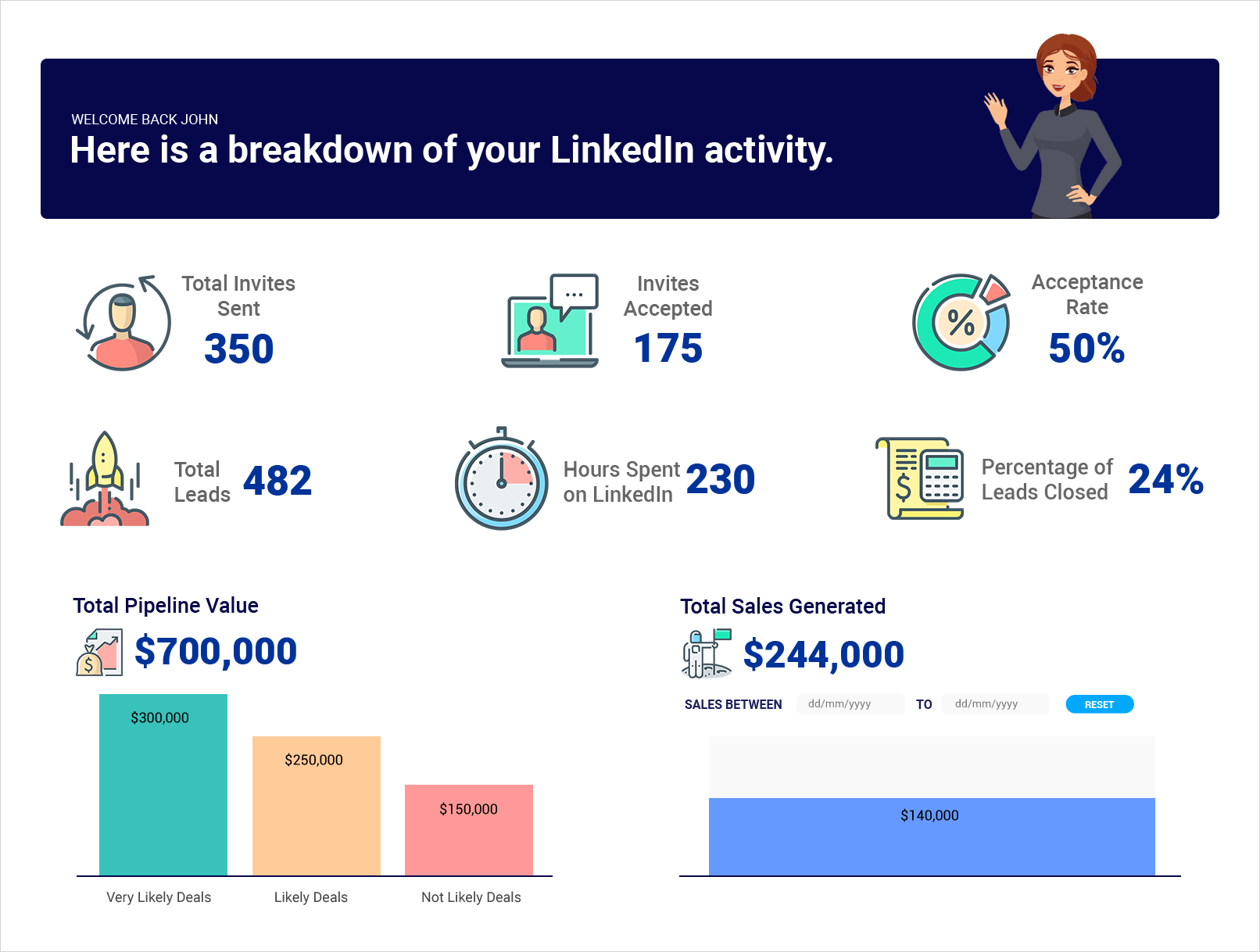
Every single marketing initiative you undertake should always be tracked and measured. What’s the point of doing something if you can’t measure it and see where improvements need to be made? 🤔
At the end of the day, marketing is all about continuously testing your campaign until optimal performance is achieved. Once you’ve got your campaign up and running, the key statistics to track are:
1) Your acceptance rate of invites sent to those accepted
2) How many conversations are opening up per week from those connections
3) From those conversations how many meetings are being generated
And finally what percentage of those meetings turn into deals and sales opportunities. Running this type of report will give you the insight to make the adjustments necessary to continuously improve your campaign. For example, if you look through your data and notice that you’ve had ten meetings with leads from the IT sector but healthcare is buying a lot more, you might decide to switch up your search and try niching down by removing IT and focusing solely on targeting healthcare.
Now we know what you might be thinking, oh gosh how many spreadsheets am I going to need to track all of this? Well, none really. This is where the reporting function of our new software Jayla comes to the rescue. She’ll help you review the performance of your campaign, find gaps for improvement and track your ROI.
Inside your dashboard you’ll also get a 360 view of your deal pipeline, connection acceptance rate, meetings booked, deals closed, and much more. To learn more click here to apply for access to Jayla today. 😁
Last but not least, everything you do online should be a reflection of your true personality, and we mean ANYTHING. If you’re not being yourself you’ll end up being inconsistent, because it’s impossible to keep up an act 100% of the time. As a result, you’ll run the risk of having one persona online and a totally different one offline.
The whole purpose of social media is to connect with your audience and develop relationships, and the only way to be truly successful is to be authentic and transparent. So next time you’re shooting a video, engaging with someone online, or updating your profile, remember to always be yourself because the person you want to be is already taken.


We're celebrating the launch of Jayla by giving our first 500 customers access to our VIC club. As a 'Very Important Customer' you won't just feel special, you'll get notified of the release first and have the price of your subscription fixed for life.
On top of all that you'll get priority support and an invite to an exclusive live masterclass with our founder Alex Pirouz. This is strictly limited to only 500 VIC's available.
We’re celebrating the launch of Jayla by giving our first 500 customers access to our VIC club. As a ‘Very Important Customer’ you get access to Jayla weeks before the public, price of your subscription fixed for life, priority support and an exclusive live masterclass.
Fill out your name and email to be in the know.